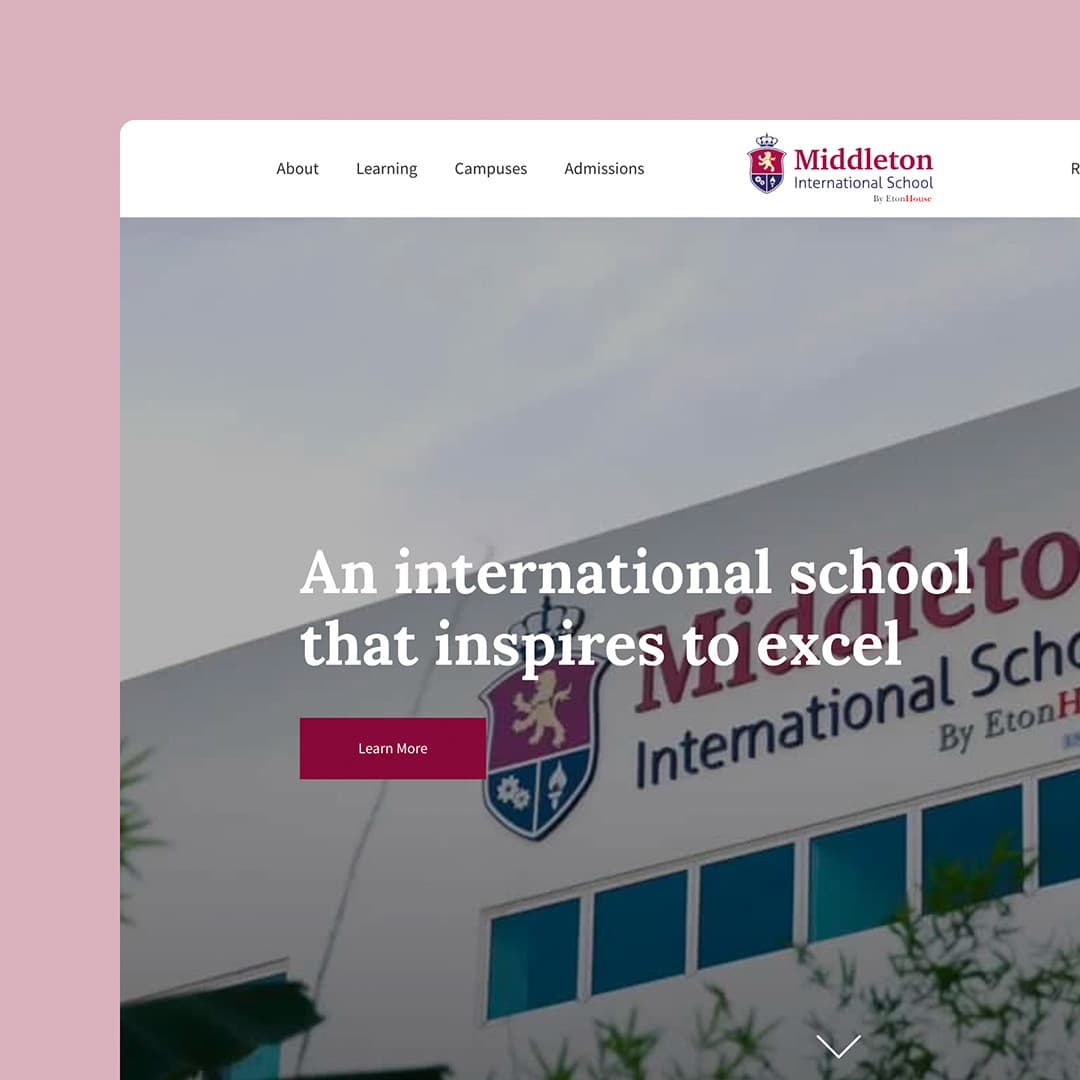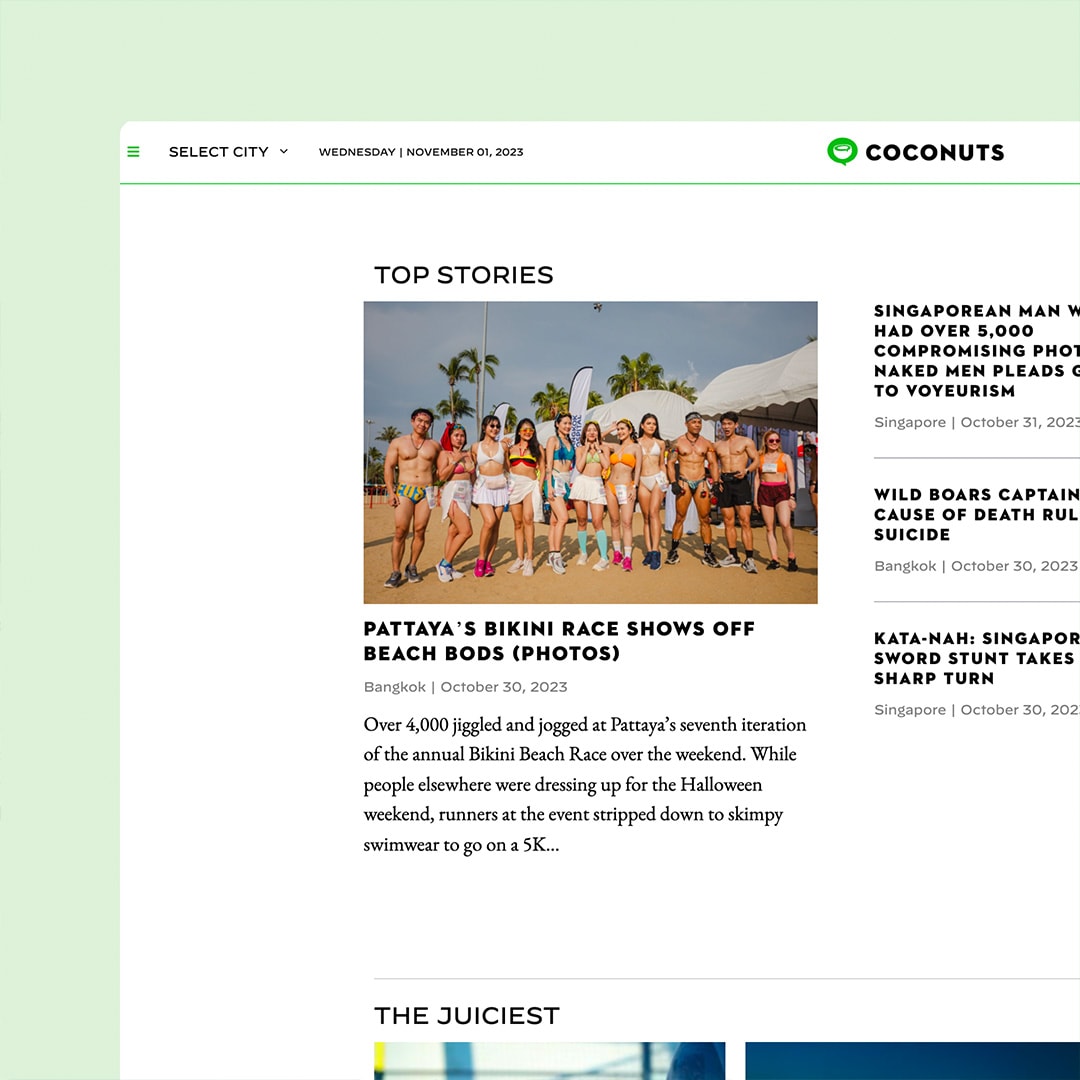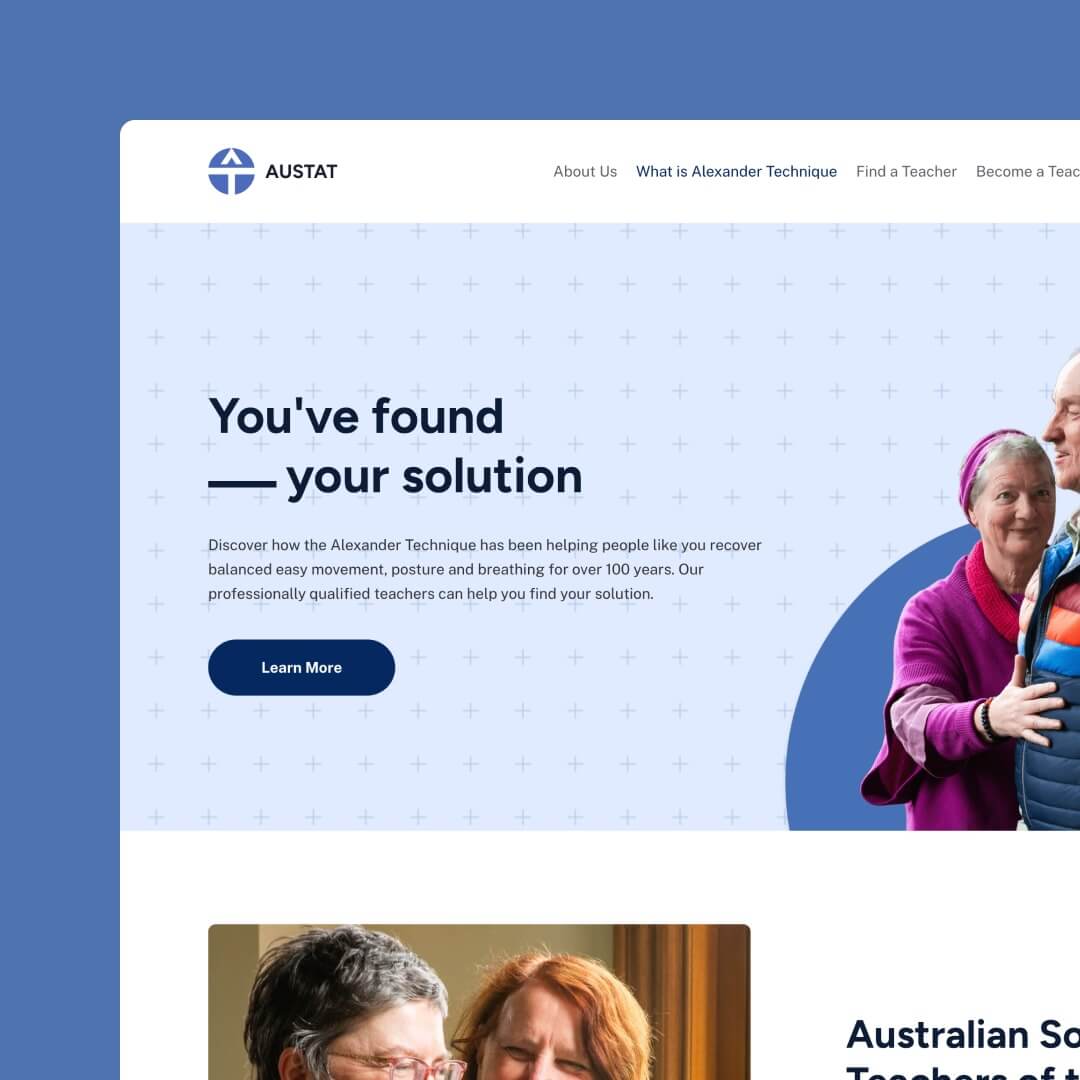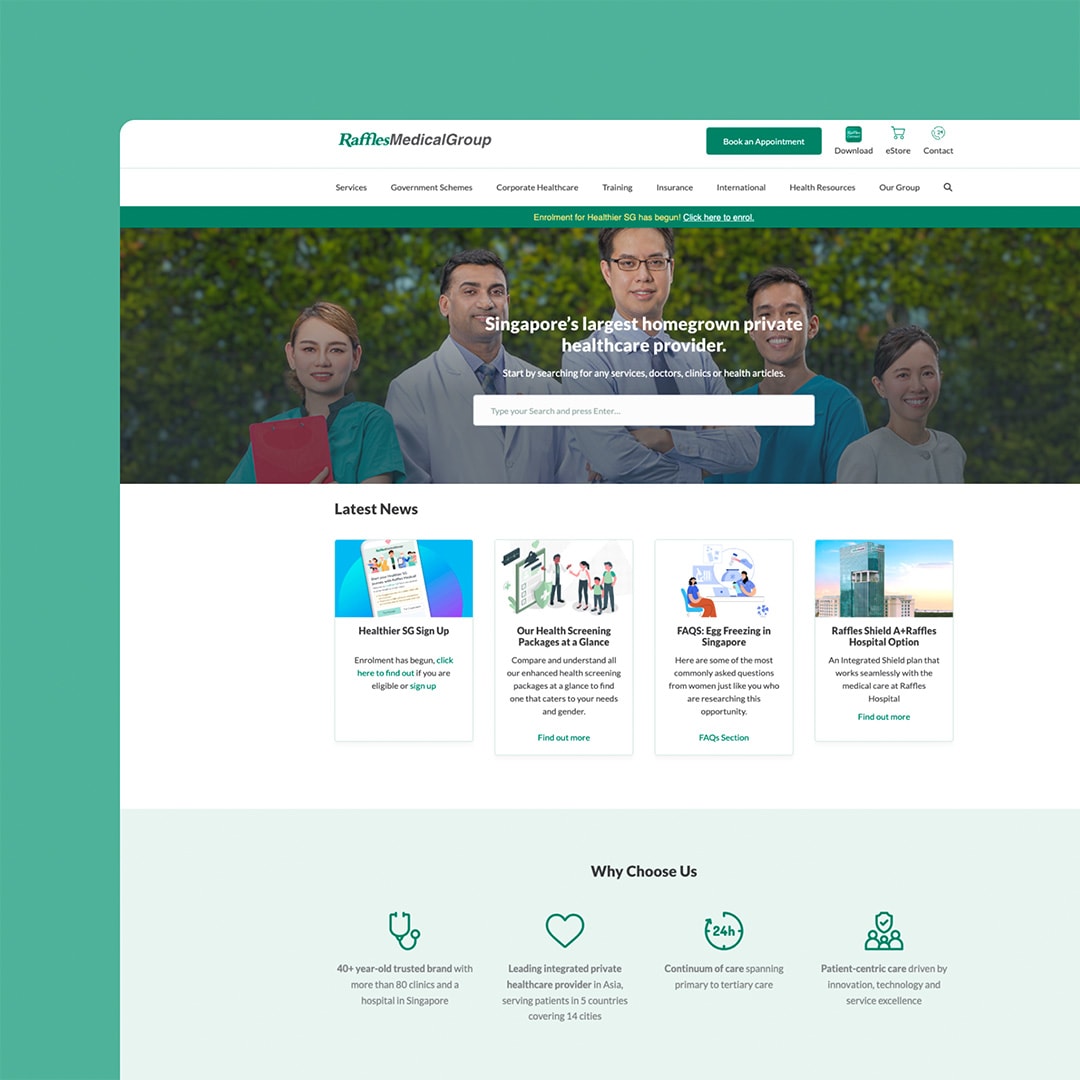
Owning a productive website has become increasingly crucial for business owners, entrepreneurs, and individuals. At the heart of any successful website lies a combination of factors, including a clear purpose, user-friendly design and optimised content. These elements work in tandem to create a website that appeals to its audience, ranks well on search engines, and ultimately achieves its goals to increase your brand and business value.
Getting that combination right for your website comes down to understanding the purpose of a website, as it will guide your overall design, content, and functionality choices.
A well-designed website should be:
- Visually appealing
- Easy to navigate
- Tailored to its target audience
Always strive for website content that is relevant, informative and engaging, as this will encourage visitors to stay on the site longer, boosting your overall performance.
The majority of browsing takes place on mobile devices, so websites need to be fully responsive across various platforms to keep up with user demand and expectations.
Additionally, focusing on search engine optimisation (SEO) strategies and website performance helps ensure a solid online presence, attracting more traffic and increasing brand trust.
Key Takeaways
- A successful website has a clear purpose, user-friendly design, and optimised content.
- Device responsiveness, search engine optimisation, and website performance are crucial to website success.
- Engaging content, appealing design, and a robust online presence contribute to the overall effectiveness of a website.
Table of Contents
Identifying the Purpose of the Website
Having a clear purpose when designing your website is essential, as it allows the site to be tailored to achieve specific goals and target the right audience. When defining the purpose of a website, it is essential to consider the needs of potential visitors and what they seek from the site.
There are several everyday purposes for websites, such as:
- E-commerce: To sell products or services online. To be successful, the site must communicate the value users will receive from making a purchase and offer a user-friendly shopping experience, including a seamless checkout process.
- Lead generation: To convert visitors into prospects by offering information, resources, and opportunities to connect with the business. Such a website should be designed with the user in mind, offering valuable content and clear calls to action that encourage users to take the next step.
- Brand promotion: To create awareness and loyalty for a specific brand or organisation. It should reflect the brand’s identity and values, showcase its products or services, and encourage trust and engagement from visitors.
- Information and resources: To provide users with information on particular topics or resources to assist them with their research or projects. This type of site should be well-organised, easy to navigate, and filled with accurate and up-to-date information.
The key to a successful website lies in defining the explicit purpose of the site and then designing and structuring it to fulfil those objectives. By taking the time to identify what the website aims to achieve, it becomes easier to create a site that is both functional and engaging, providing value to the end-users.

Importance of Good Website Design
To create a successful website, it is essential to have a clear understanding of its purpose and the target audience. This helps in designing a site that is both visually appealing and user-friendly, providing a positive user experience. Good website design should also have a vital purpose and communicate its message to visitors, preferably on the home page.
Navigation
A successful website heavily relies on efficient navigation. Presenting a clear and straightforward way for users to explore the site ensures a smooth and enjoyable browsing experience. A well-implemented navigation menu makes it easier for visitors to locate the information they need quickly, which ultimately increases user satisfaction and improves conversion rates.
Images and Videos
Visually appealing multimedia content, such as quality images and videos, captures user attention and supports the overall message and purpose of the website. High-quality visuals can enhance the user experience, communicate complex ideas more effectively, and make the website more memorable.
Branding and Logo Design
A consistent and professional brand identity across all pages helps reinforce the brand message and increase credibility. A well-designed, eye-catching logo creates a lasting impression, making it easier for users to remember and associate with the brand. Focusing on branding and logo design enables businesses to build trust and loyalty among their target audience.
Making a Website User-Friendly
A user-friendly website provides an efficient, intuitive, and accessible experience for its visitors. This can be achieved through a combination of:
- Usability engineering
- User experience (UX) design
- Thoughtful implementation of features that cater to user needs
- User Feedback
Usability Engineering
Usability, the ease with which users can access and navigate a website, is a critical component of its overall user experience. A website that prioritises usability will take into account factors such as loading speed, intuitive navigation, and clear labelling of links and buttons to create a straightforward experience. This enables users to find the information they need or perform desired actions with minimal effort, leading to increased satisfaction.
User Experience (UX) Design
UX design aims to create an overarching positive experience for users by anticipating their needs and preferences to generate a smooth and engaging interaction. This could involve incorporating features such as responsive design across different devices and screen sizes, breadcrumb trails to allow easy backsteps and intuitive calls-to-action buttons to get from A to B more quickly.
Diverse User Needs
To create a truly user-friendly website, it’s essential to cater to diverse user needs and requirements. This might include providing alternative text descriptions for images, offering transcripts for audio content and implementing keyboard navigation for users with disabilities. By adhering to web accessibility guidelines, a website can reach a wider audience and provide a positive experience for users of all abilities.
User Feedback
Incorporating user feedback is another essential aspect of making a website user-friendly. Actively seeking user input, be it through surveys, usability testing, or direct communication, allows for continuous improvement. By taking user feedback into account, a website can be adjusted and enhanced to serve its intended audience better and maintain a high level of user satisfaction.

Responsiveness Across Devices
Responsive web design (RWD) aims to create web pages that render well on all screen sizes and resolutions, ensuring consistency and usability across different devices.
The key to a responsive design is using fluid grids and flexible media. This approach involves implementing layouts that adapt to various screen sizes while maintaining proper proportions and aesthetics. It is crucial to use HTML, CSS, and JavaScript to achieve this responsive behaviour effectively.
It is essential to create flexible media like images and videos that can automatically resize, ensuring they fit well within the display dimensions of any device. This allows for optimum user experience without distortion or loss of content visibility.
Testing is an essential aspect of ensuring responsiveness across devices. Use real devices to test the design across various screen sizes and platforms to verify its compatibility. This process helps to identify any discrepancies or inconsistencies.
Importance of SEO in Website Success
Search Engine Optimisation (SEO) plays a vital role in the success of any website. By implementing effective SEO strategies, you can significantly improve the visibility of your site in search engine results, leading to increased website traffic and better user experience.
Keywords
One of the fundamental aspects of SEO is the proper use of keywords. By incorporating relevant keywords into your website’s content, meta tags, and other elements, you increase the chances of your site ranking higher on search engine results pages (SERPs). Higher rankings on SERPs can translate to more organic (non-paid) visitors, improving the quality and quantity of traffic to your site.
Additionally, search engines such as Google, Bing, and Yahoo utilise algorithms to deliver the most relevant search results to users. By optimising your website according to these algorithms through on-page and off-page SEO practices, your site can gain additional exposure and credibility.
Audience First
SEO works to deliver the best websites first, so while algorithms are all well and good, the true purpose of a website should be creating a unique and value-driven website for users.
Good SEO practices not only cater to search engines but also focus on enhancing the user experience and usability of a website. This improves user satisfaction, leading to higher conversions and customer loyalty.
Apart from driving traffic and improving site usability, SEO also positively impacts your website’s branding and online reputation. A strong presence in top SERP positions for relevant keywords fosters trust and credibility in the eyes of potential customers.
We build stunning, user-focused websites that will wow your customers.
Are you a business owner in Singapore, Australia or worldwide? We work with clients across the globe to deliver beautiful yet functional website designs.

Key Elements of Website Performance
Website performance is crucial for delivering a positive user experience. It encompasses various elements, the most significant being website uptime and site structure. Ensuring optimal website performance involves monitoring, optimising, and maintaining these elements.
Website Uptime
Website uptime refers to when a website is accessible and operational to users. It is a critical factor due to:
- Availability: High uptime ensures that your website is accessible to users 24/7, enhancing user satisfaction and trust.
- SEO Ranking: Search engines prefer websites with high uptime, potentially improving your search engine rankings.
- Business Continuity: Maintaining uptime is essential for e-commerce, as downtime can result in lost sales and revenue.
- Monitoring: Regularly monitor website uptime using tools to identify and address downtime issues promptly.
- Hosting Quality: Choose a reliable hosting provider that guarantees high uptime percentages, typically above 99.9%.
Site Structure
A well-organised site structure significantly contributes to a website’s success. The structure should be designed with both users and search engines in mind, making it easy for users to navigate through the content while also allowing search engines to crawl and index the site efficiently. Some fundamental principles for creating an effective site structure include:
- Simple and logical navigation: Use a clear and consistent main menu to help users find essential pages quickly and include important links in the footer.
- Hierarchical organisation: Structure content in a way that reflects their relative importance, using subcategories and subpages as needed.
- Descriptive and meaningful URLs: Create easy-to-understand URLs featuring relevant keywords for each page.
- Internal linking: Incorporate internal links throughout the content to help users discover related information and improve search engine indexing.
- Mobile-friendliness: Employ responsive design to ensure the website adapts well to various devices and screen sizes, providing a seamless user experience.
By focusing on these key elements of website performance, you can create a successful online platform that attracts and retains visitors, allows for easy indexing by search engines, and ultimately drives business growth.
Do I need a Blog for My Website To Be Successful?
A blog plays a significant role in the overall success of a website. It serves as a platform to share valuable content, which engages readers and addresses their questions or concerns. Regularly publishing insightful blog posts covering topics related to a website’s niche not only showcases the author’s expertise but also helps to establish credibility and trust with the audience.
Search engines, such as Google, rely heavily on the quality and relevance of content for their ranking algorithms. By continuously updating a blog with well-researched and informative posts, a website can improve its visibility in search results, driving more organic traffic. Moreover, blog content can be easily shared across social media platforms, further expanding its reach to potential customers.
In addition to showcasing knowledge and driving traffic, blogs also serve as a platform for user engagement. Engaging with readers through comments and feedback can help build long-lasting relationships and create a sense of community around the website. This open line of communication encourages customers to provide valuable input and share their experiences, ultimately leading to better business strategies and improved customer satisfaction.
By integrating a well-managed blog into a website’s overall content strategy, the chances of success are significantly increased. Relevant, high-quality blog posts attract and engage target audiences while improving search engine rankings, fostering strong relationships, and increasing brand visibility.

Incorporating Customer Support and Providing Contact Information
Incorporating exceptional customer support adds value to a website and creates trust among visitors.
Proactive strategies such as chatbots, attentive live chat agents, and a comprehensive FAQ section can help resolve customer queries and access contact information quickly and easily.
Customer support strategies to consider include:
- Implementing chatbots to gather essential customer information and handle repetitive questions 24/7.
- Providing live chat support with well-trained representatives who are personable, responsive, and well-equipped to resolve various issues.
- Creating an extensive FAQ section that addresses the common questions and concerns of customers.
Concerning contact information, it is crucial to make key details readily accessible to visitors. A dedicated Contact Us page listing essential information such as phone numbers, email addresses, and postal addresses instil confidence in the website and can facilitate communication when customers have specific inquiries.
Displaying essential contact details in the footer or header of the website allows for quick access, further enhancing the visitor’s experience.
Building Community and Credibility
By fostering trust and encouraging engagement, website owners can establish a sense of community and credibility, boost their online presence and create lasting relationships—plenty of different ways to build a community and allow visitors to engage in conversations.
How you do this will depend on your business and website goals, audience and overall purpose. It’s a great way to think outside the box and offer something unique, exciting and valuable.
You will need to have a team member monitor and lead the discussion to delete unwanted additions and steer the discussion in a positive and valuable direction.
Here are some examples of how you can build credibility:
Leveraging Testimonials and Reviews
One effective way to build credibility is by incorporating testimonials and reviews from customers or users who enjoyed their experience with you. Showcasing real experiences from real people can significantly increase trust in your website and its offerings and give it a genuine and personal feel.
Consider the following techniques:
- Displaying a dedicated testimonials page or adding reviews strategically on your homepage.
- Utilising social proof in promotional materials, including customer ratings on product pages.
- Ensuring that testimonials and reviews are authentic and verifiable, avoiding any fabricated or biased content.
Creating Engaging Forms
Engaging users directly can also contribute to building a solid community. Interactive forms allow website visitors to connect, share opinions and feedback, and strengthen your online community. Some best practices for creating engaging forms include:
- Designing simple and visually appealing forms that encourage participation.
- Keeping the number of required fields to a minimum to reduce friction and optimise completion rates.
- Implementing clear labelling and helpful hints ensures users understand what is expected of them.
By prioritising community and credibility, your website will attract new visitors and foster a sense of loyalty among existing users.

Choosing the Right Hosting Provider
Choosing the right hosting provider helps ensure your website remains stable and runs efficiently regardless of traffic volume or time of day. Not all providers are created equal, and sometimes saving a dollar by choosing a cheaper provider can hurt your website’s success due to unreliability, lack of trust or poor accessibility.
In this section, we will discuss the key factors to consider when choosing a web hosting provider.
Hosting Type
Hosting providers typically offer various service types, including shared, virtual private server (VPS), dedicated server, and cloud hosting. For new websites with modest traffic, shared hosting can be an affordable and feasible option, although drawbacks include caps on volume and security risks. Typically, the more you pay, the better value your provider will offer.
Performance Metrics
Before you sign on, check the provider’s performance metrics, including average uptime and page load times. High uptime ensures that your website remains accessible to visitors. At the same time, a speedy page load time is essential for preventing potential users from navigating away from your site, increasing SEO and helping decrease your bounce rate.
Customer Support
A responsive and knowledgeable customer support team can be invaluable for addressing concerns and resolving issues. Look for providers offering multiple ways to reach their support team, such as phone, email, or live chat.
Pricing
Pricing should also be considered with your budget. While it may be tempting to opt for the cheapest hosting solution available, it’s essential to ensure the provider’s performance and customer service are not compromised by low costs. Compare various providers’ pricing to identify the best value option for your budget and needs.
Security
Of course, security should not be overlooked. A reliable web hosting provider should offer robust security measures, including SSL certificates, firewalls, and regular backups, to protect your website from cyber threats. While cheaper provider packages typically ask for additional fees for these securities (if they have them), you can usually expect them to be included as part of the cost with a quality provider offer.
If in doubt, make sure the option you begin with is flexible enough to move with you as your business grows, or you can walk out free and go to another provider if your needs change. Starting cheap is fine while you find your feet, but always have the safety net of scaling quickly if your website traffic demand explodes overnight.
What is the Key to a Successful Website? – Final Thoughts
The key to a successful website hinges on several fundamental elements that define your brand and communicate trust to your online audience.
Firstly, the site must have a well-defined purpose, ensuring visitors immediately understand its intention. This clarity is complemented by a user-friendly design and optimised content that caters to the needs and preferences of its audience. Additionally, a website’s technical attributes play a pivotal role. This includes its responsiveness across various devices, its visibility on search engines through effective SEO practices, and its overall performance in terms of loading speeds and reliability.
Lastly, to truly stand out, a website must house valuable and engaging content and an attractive design, ensuring repeat visits and longer user engagements. Coupled with a robust online presence, these factors work in tandem to elevate a website’s overall effectiveness and success in the digital landscape.
To discuss how your business can shine online with a successful website, contact the team at Chillybin today.
You may also like…


Our expertise
Website Design
We mix creativity with UX thinking to design interfaces that feel seamless. Always responsive, always built around outcomes — leads, engagement, conversion.













